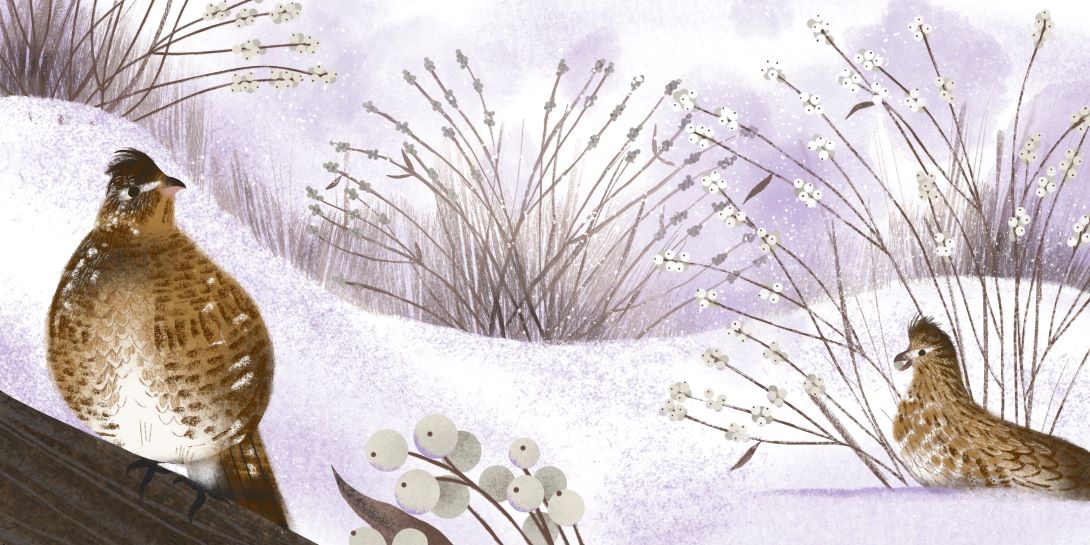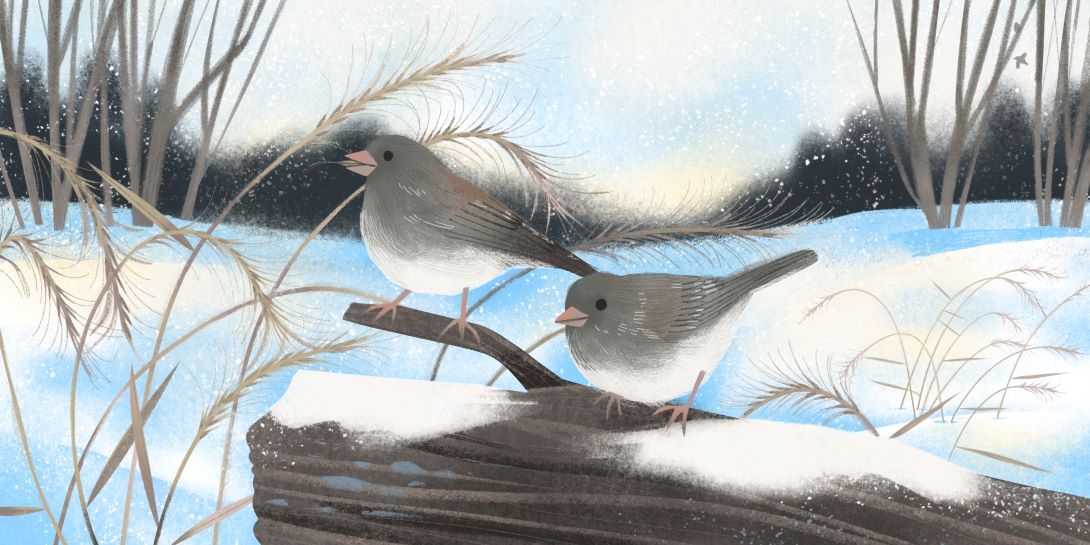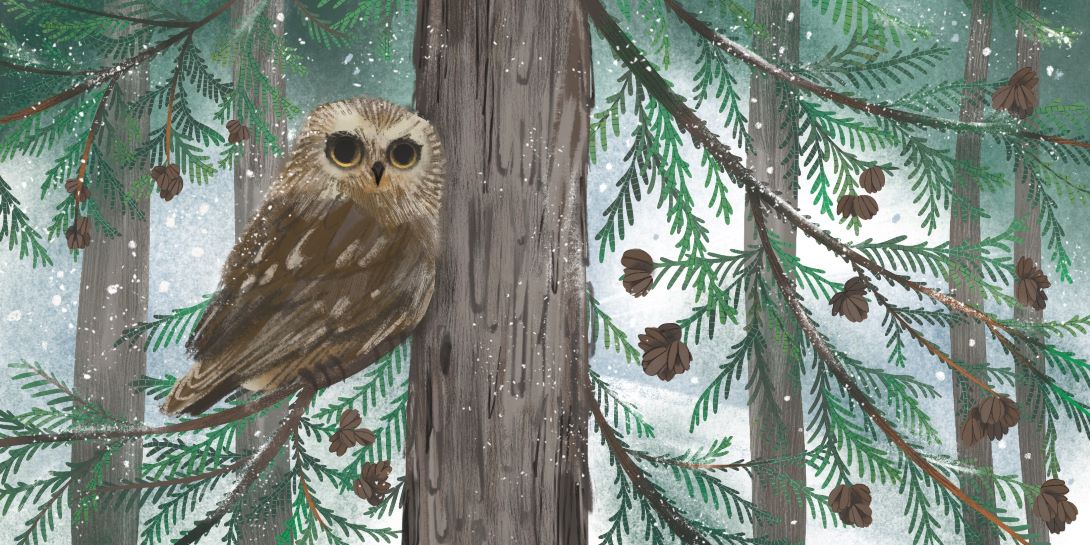Native plants hold answers to many winter wildlife mysteries
By Jarmila Becka Lee, Steve Hamel and Ellen Jakubowski
For those of us living in Canada, winter is a time for reflection. A time when we ask ourselves questions like, “Why do I live where the air hurts my face?” “Will my car start this morning?” and “How many bags of chips should I buy before the next snowstorm?”
Winter’s rigours spark questions about local wildlife, too, like, “What do birds eat in places with no birdfeeders?” Or perhaps, “Where do insects go when the temperature drops?” The answer to these types of questions is often native plants.
While you wait out the next bout of inclement weather, grab yourself a piping hot beverage and shovel into these wintry wildlife facts.
Common snowberry + ruffed grouse

Common “snowberry” (Symphoricarpos albus) is a logical name for this thicket-forming shrub. After pink flowers bloom in spring, white berries form in clusters around its sparse branches and remain in place into the winter, after its leaves are shed. These berries are food for a host of birds like the ruffed grouse (Bonasa umbellus; pictured), American robin and hermit thrush as well as black bears. White-tailed deer and elk eat the twigs, and birds and small mammals take shelter in and under its branches.
To help wildlife in winter, consider adding common snowberry to your property as individual shrubs or to form a hedge. This species thrives in a range of light and moisture conditions, including sandy or gravelly soils. Common snowberry is native in provinces from B.C. to Quebec and in Nunavut.
Canada wildrye + dark-eyed junco

Another way to help feed wildlife through the colder months is to leave seed heads on flower stems and grasses instead of cutting them off. Birds like dark-eyed juncos (Junco hyemalis; pictured) depend on seeds from Canada wildrye (Elymus canadensis; pictured) and other plants as their primary winter food source.
Canada wildrye offers other benefits to wildlife as well. At various times of year, eastern cottontail rabbits and insects like leafhoppers and beetle larvae eat its vegetation and birds use it as nesting material.
This adaptable grass occupies assorted habitat types, from prairies, to sand dunes, to shorelines and beyond. Grow it for its tall, arching silhouette that adds interest to the landscape throughout the seasons and to control erosion along slopes and shorelines. This grass is native from B.C. to New Brunswick and in Nunavut.
Purple-flowering raspberry + leafcutter bees

Raspberries are a great snack — for people, of course, but also for other mammals and for birds. The purple-flowering raspberry (Rubus odoratus; pictured) additionally provides protective cover for birds and small mammals while its flowers yield nectar and pollen that feed pollinators like butterflies and native bee species.
In winter, this shrub serves a fascinating function for bees in the Megachile genus (also called “leafcutter” bees; pictured). The bees’ larvae shelter within protected spaces, such as pithy (soft-centred) stems of plants like purple-flowering raspberry, inside logs or in rolled-up leaves. In spring, the bees mature into pupae and then adults before emerging from these nesting places (see left side of image).
In Canada, purple-flowering raspberry is native to Ontario, Quebec and Nova Scotia.
Eastern white cedar + saw-whet owl

Eastern white cedars (Thuja occidentalis) are attractive and familiar landscape features — and they hold more than meets the eye! Look closely and you might be surprised at the wildlife species sheltering within their branches. You could even spot an adorable northern saw-whet owl (Aegolius acadicus; pictured) snoozing there, even in an urban or suburban area.
Wildlife species including deer, red squirrels and hares eat this tree’s branches while birds and small mammals dine on seeds from its small cones.
In addition to helping to support wildlife, eastern white cedar is hardy, tolerating shade and a range of moisture conditions, and helps to control erosion along shorelines. In Canada, this tree is native from Manitoba east to the Maritimes.

